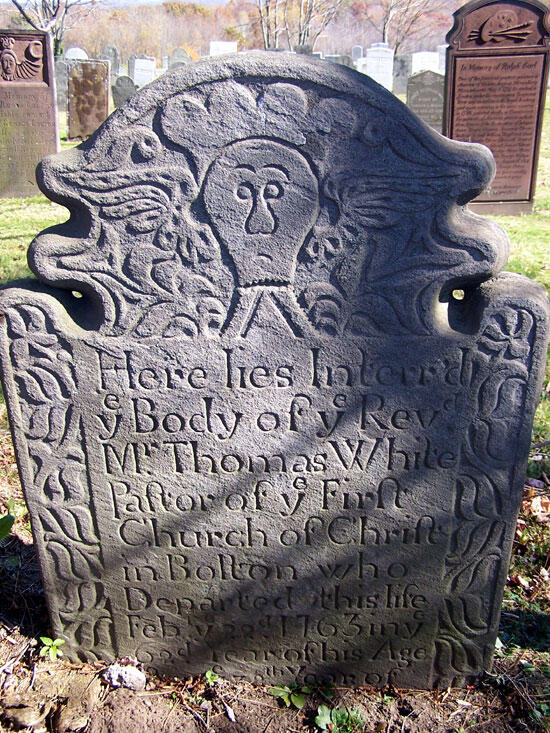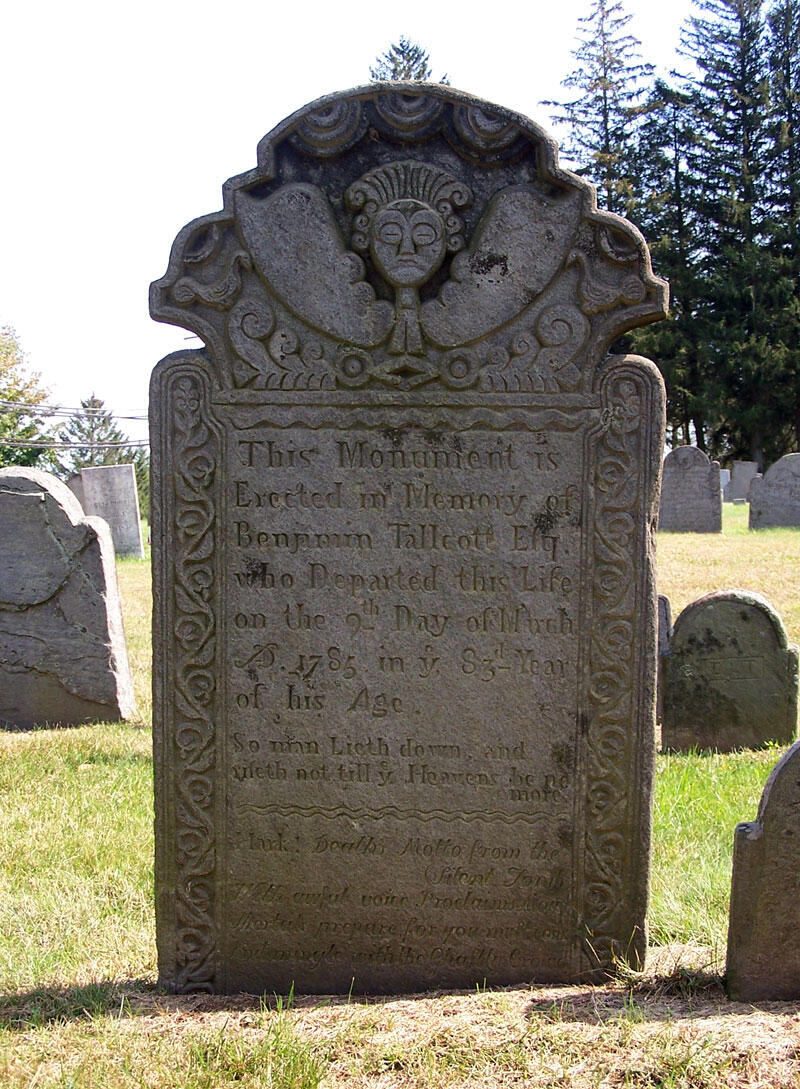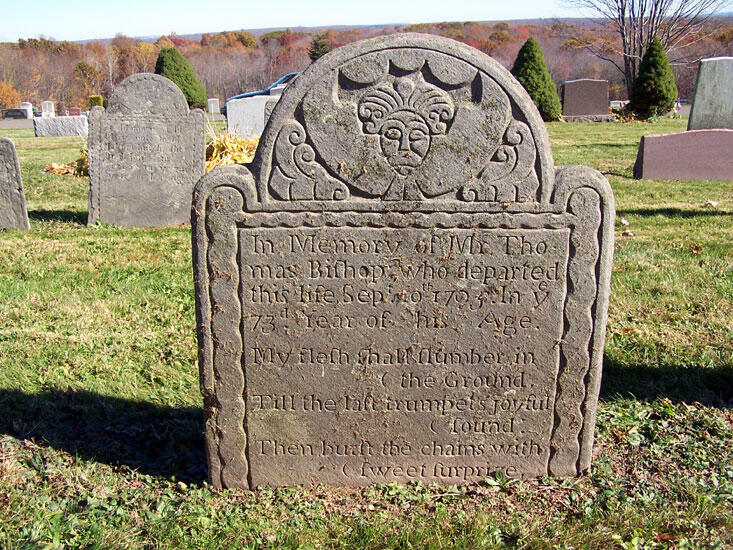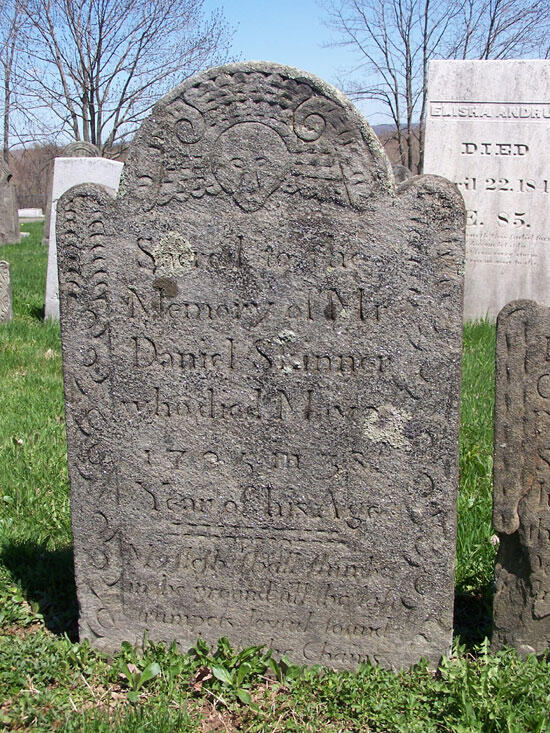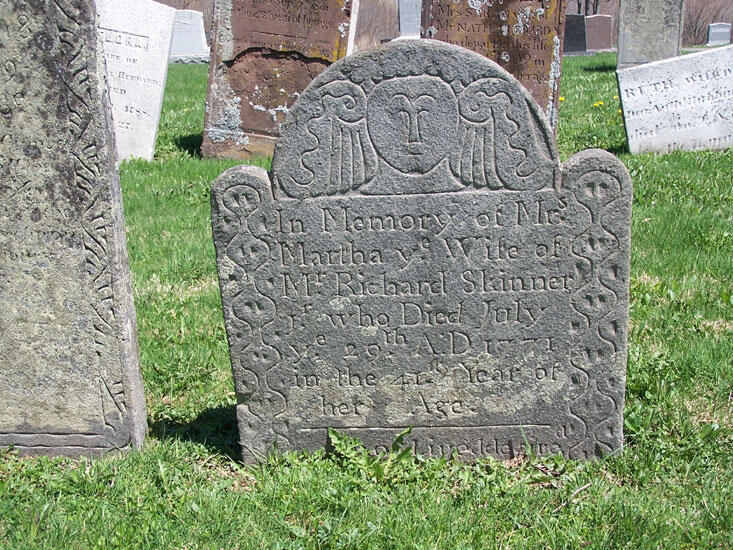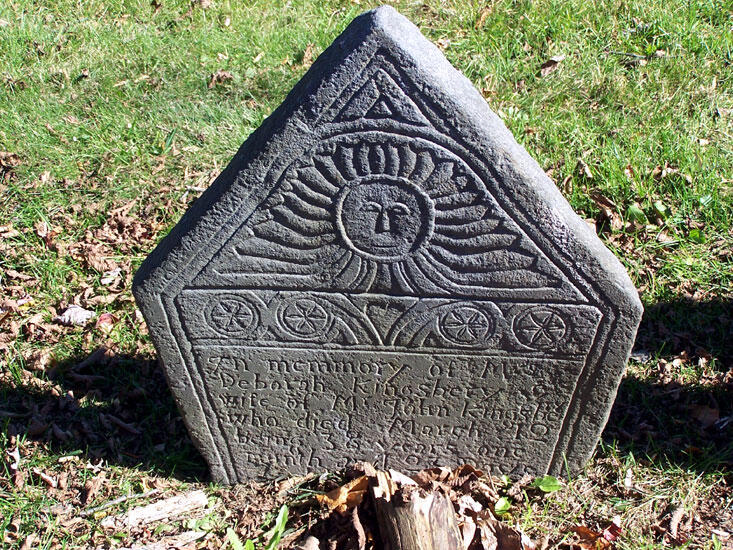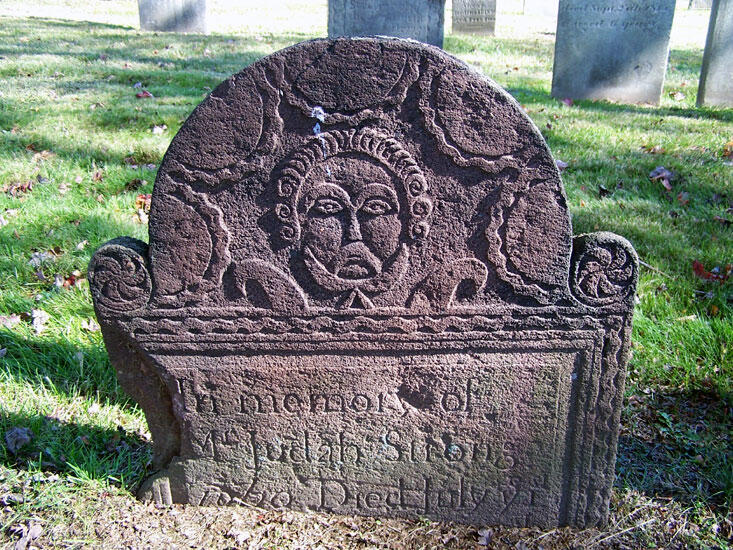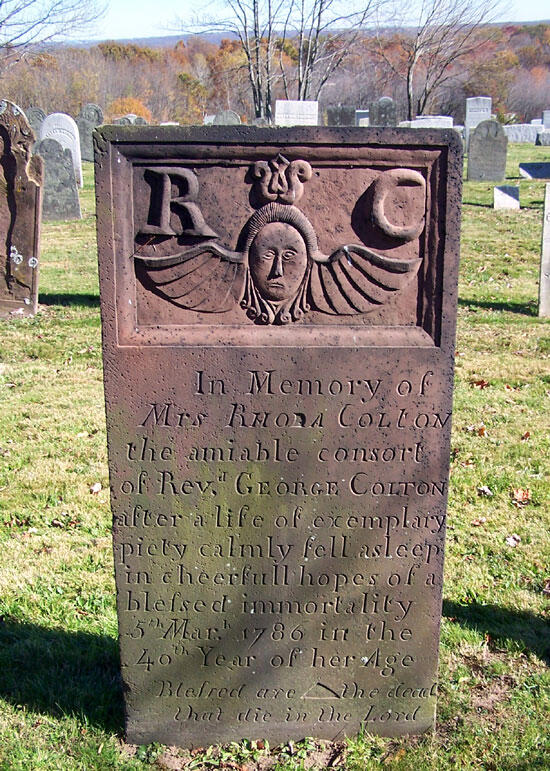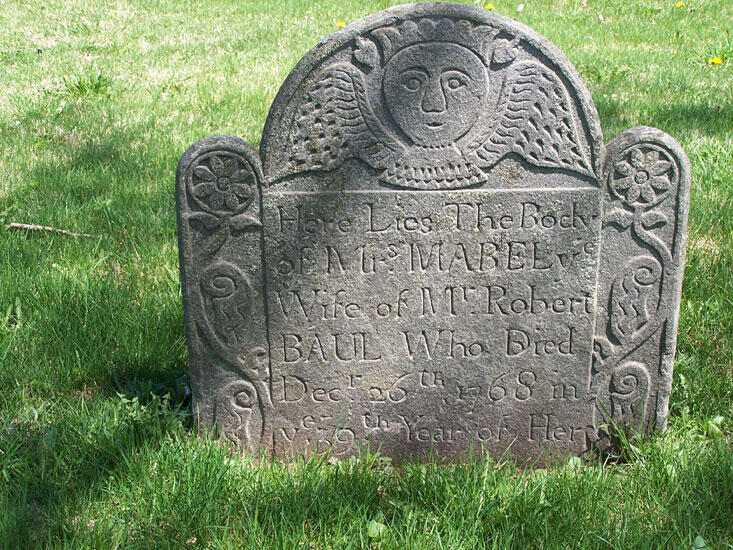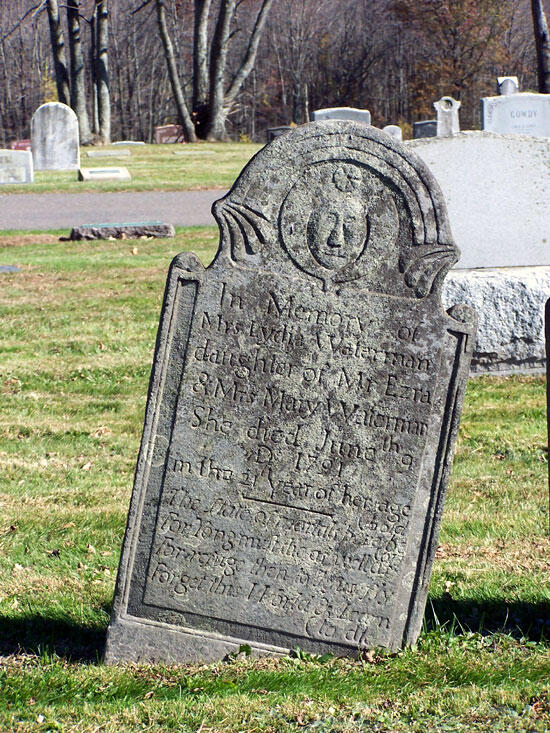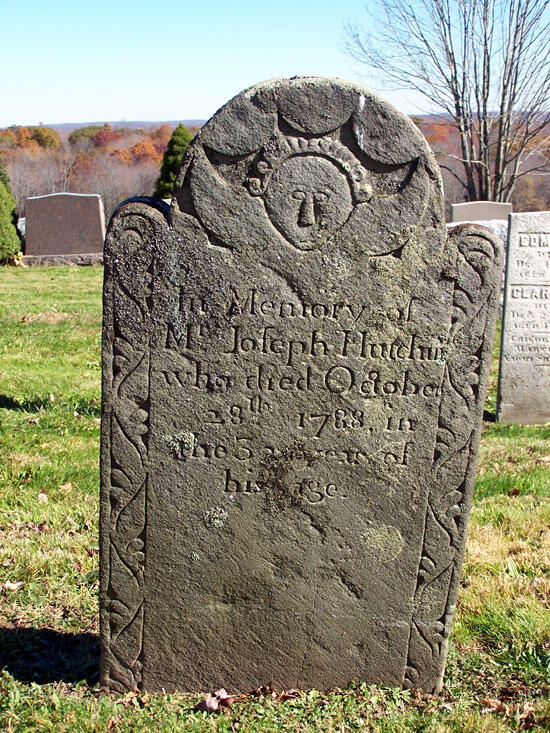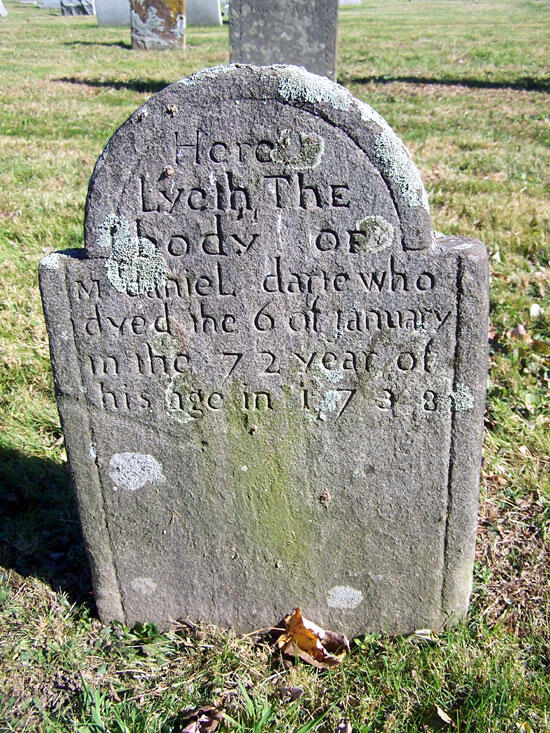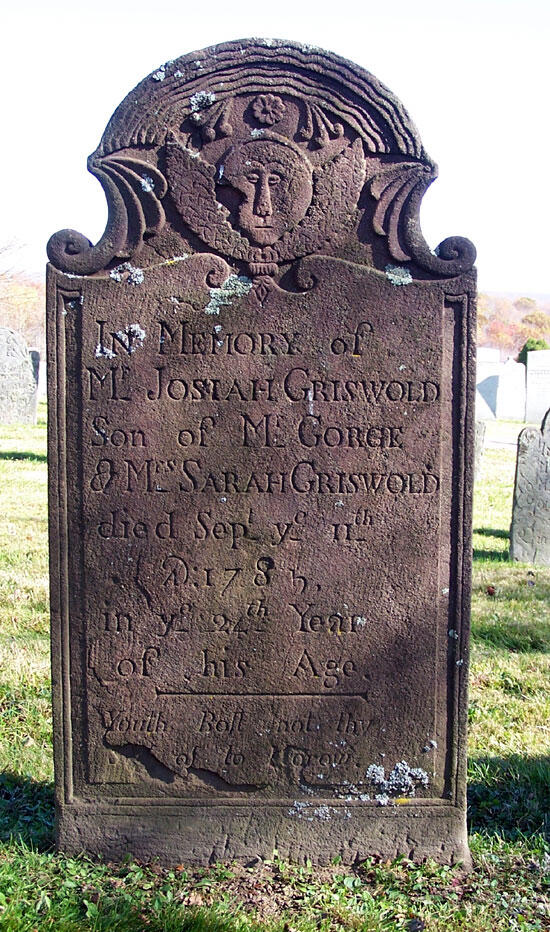Cemetery Indices (to 1934)
Open links below to see indices and tombstone photographs.
(Note: The photographing of tombstones is an ongoing project. Check back from time to time if you don't find the one you're looking for! — Eileen Stanley)
Colonial Carvers in Bolton's Cemeteries
Much of the following information has been gleaned from "The Colonial Burying Grounds of Eastern Connecticut and the Men Who Made Them," by James A. Slater, an encyclopedic work published by the Connecticut Academy of Arts & Sciences in 1987. Because colonial gravestone carvers have not left a record of their work, identifying their stones is a very imprecise science. What is well documented, however, is that the granite schist from Bolton quarries was highly prized by carvers all over eastern Connecticut.
— Eileen Stanley
The Hook and Eye Man
Gershom Bartlett (1723–1798)
Gravestone carver Gershom Bartlett was a native of Bolton, Connecticut. Working in stone from Bolton quarries, he created easily recognizable carvings featuring bulbous noses and raised eyebrows (hence the "hook and eye" sobriquet), vestigial teeth at the bottom of the face, and lobed crowns. Many examples of his work (over 50) still exist in Bolton's cemeteries.
1748 John Swetland
1752 Hannah Bissell
1753 Molley Griswold
1754 Timothy Olcott
1763 Rev. Thomas White
1776 Thomas Pitkin
1777 John Bissell
Winged Face Carvers
The Manning Family
Josiah (1725–1806), Frederick (1758–1810), Rockwell (1760–1806)
Present in almost every eighteenth-century cemetery in eastern Connecticut, the predominant Manning style uses a frowning face pattern with an upswept hairstyle consisting of a central pompadour and side curls.
1764 Thomas Taylor
1775 Dorothy Hammond
1776 Mary Hammond
1785 Benjamin Tallcott
Aaron Haskins (1752–1795)
Haskins lived in Bolton and was a close imitator of the Mannings. His mouths are heavier, curving downward, and his eyes are very heavily lidded. His carvings in general are less elaborate than the Mannings. There are over 60 examples of his work in Bolton's cemeteries.
Flat-Eared Carvers
Daniel Ritter (1746–1828)
The "flat-eared" school of carving uses simple faces with down-curved wings coming from the side of the face. In his 1987 book, "The Colonial Burying Grounds of Eastern Connecticut," James A. Slater attributes 10 stones in Bolton Center Cemetery to carver Daniel Ritter — with the caveat that more evidence is badly needed.
1786 Loas Skinner
1795 Julia White
1796 Febe Farmer
1796 Chester Skinner
1797 Abiel Loomis
Peter Buckland (1738–1816)
Also of the flat-eared school of carving, Buckland's faces are relatively large and tend to be heavy in the lower half. He frequently used an elaborate floral vine motif on the stone's borders.
1763 Cornelius Birge
1771 Martha Skinner
1772 Richard Skinner
Obadiah Wheeler (1673–c.1749)
Often considered the greatest of all eastern Connecticut carvers, Wheeler lived in Lebanon. Bolton Center Cemetery has this one documented stone by him. Note the characteristic horizontal row of rosettes below the face.
-?- Thatcher Lathrop (1734–1806) -?-
"The Colonial Burying Grounds of Eastern Connecticut" (see above) states that there are three stones by Lathrop in Bolton Center Cemetery. I'm guessing that this example, in red sandstone, is one of them. Lathrop favored faces that appear to be mustached, and strongly carved wings sometimes resembling cow horns.
John Ely
Most of Ely's stones are in the Springfield, Mass., area, where he lived and began carving in the 1760s. Of the few examples found in our area, the Rhoda Colton red sandstone in Bolton Center Cemetery is a fine example.
Unidentified Carvers - Known by the Following Names
Bolton Pudgy Matron
Notable for their strange (amused?) faces and wing motifs:
Bolton Sharp-Collared Carver
Identified by their peculiar collar-like wings:
Upswept-Wing Carver
Plain, upturned wings that meet below a face with a pointed chin. The headdress is usually a simple roll of hair:
-?- Lodwick Hollister
1782 William Bliss
1788 Joseph Hutchens
1788 Richard Skinner
1799 Junia Lyman
1801 Christany Cone
Griswold Imitator
The granite stones are carefully shaped and neatly cut, with rounded tops and no designs. The carver is so named because his work resembles that of George Griswold, whose red sandstone carvings are found in the Hartford and Windsor areas.
In the Style of William Crosby
These elaborate red sandstone carvings have many of the characteristics of the work of William Crosby (1764–1801), a leading carver of the late Middletown school. Note the sweeping crowns and scrolls in his elegant work. Crosby was in partnership at various times with several other carvers, including Peter Buckland (see above), whose work is also represented in Bolton Center Cemetery.


